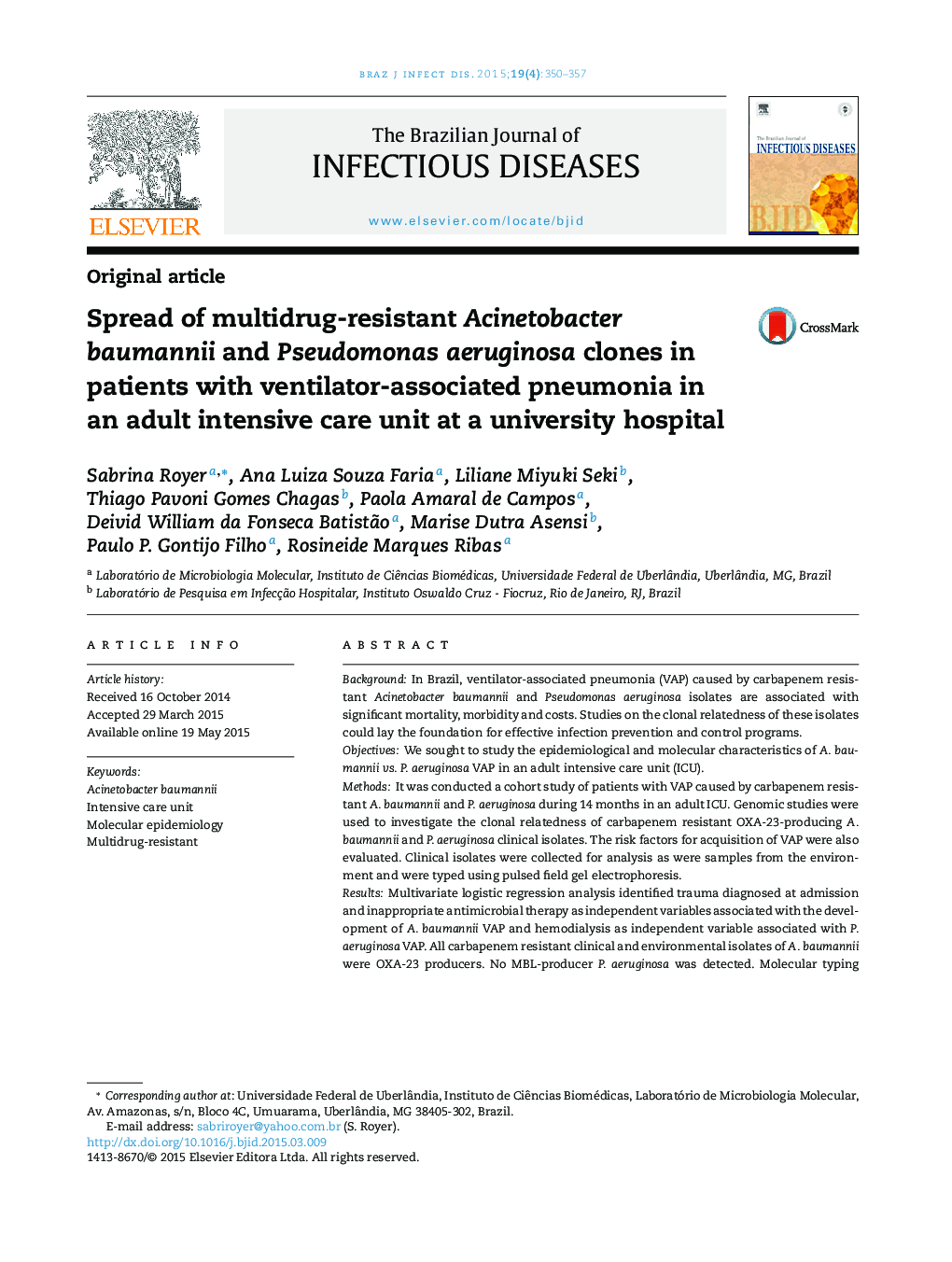| Article ID | Journal | Published Year | Pages | File Type |
|---|---|---|---|---|
| 3343845 | The Brazilian Journal of Infectious Diseases | 2015 | 8 Pages |
BackgroundIn Brazil, ventilator-associated pneumonia (VAP) caused by carbapenem resistant Acinetobacter baumannii and Pseudomonas aeruginosa isolates are associated with significant mortality, morbidity and costs. Studies on the clonal relatedness of these isolates could lay the foundation for effective infection prevention and control programs.ObjectivesWe sought to study the epidemiological and molecular characteristics of A. baumannii vs. P. aeruginosa VAP in an adult intensive care unit (ICU).MethodsIt was conducted a cohort study of patients with VAP caused by carbapenem resistant A. baumannii and P. aeruginosa during 14 months in an adult ICU. Genomic studies were used to investigate the clonal relatedness of carbapenem resistant OXA-23-producing A. baumannii and P. aeruginosa clinical isolates. The risk factors for acquisition of VAP were also evaluated. Clinical isolates were collected for analysis as were samples from the environment and were typed using pulsed field gel electrophoresis.ResultsMultivariate logistic regression analysis identified trauma diagnosed at admission and inappropriate antimicrobial therapy as independent variables associated with the development of A. baumannii VAP and hemodialysis as independent variable associated with P. aeruginosa VAP. All carbapenem resistant clinical and environmental isolates of A. baumannii were OXA-23 producers. No MBL-producer P. aeruginosa was detected. Molecular typing revealed a polyclonal pattern; however, clone A (clinical) and H (surface) were the most frequent among isolates of A. baumannii tested, with a greater pattern of resistance than other isolates. In P. aeruginosa the most frequent clone I was multi-sensitive.ConclusionThese findings suggest the requirement of constant monitoring of these microorganisms in order to control the spread of these clones in the hospital environment.
